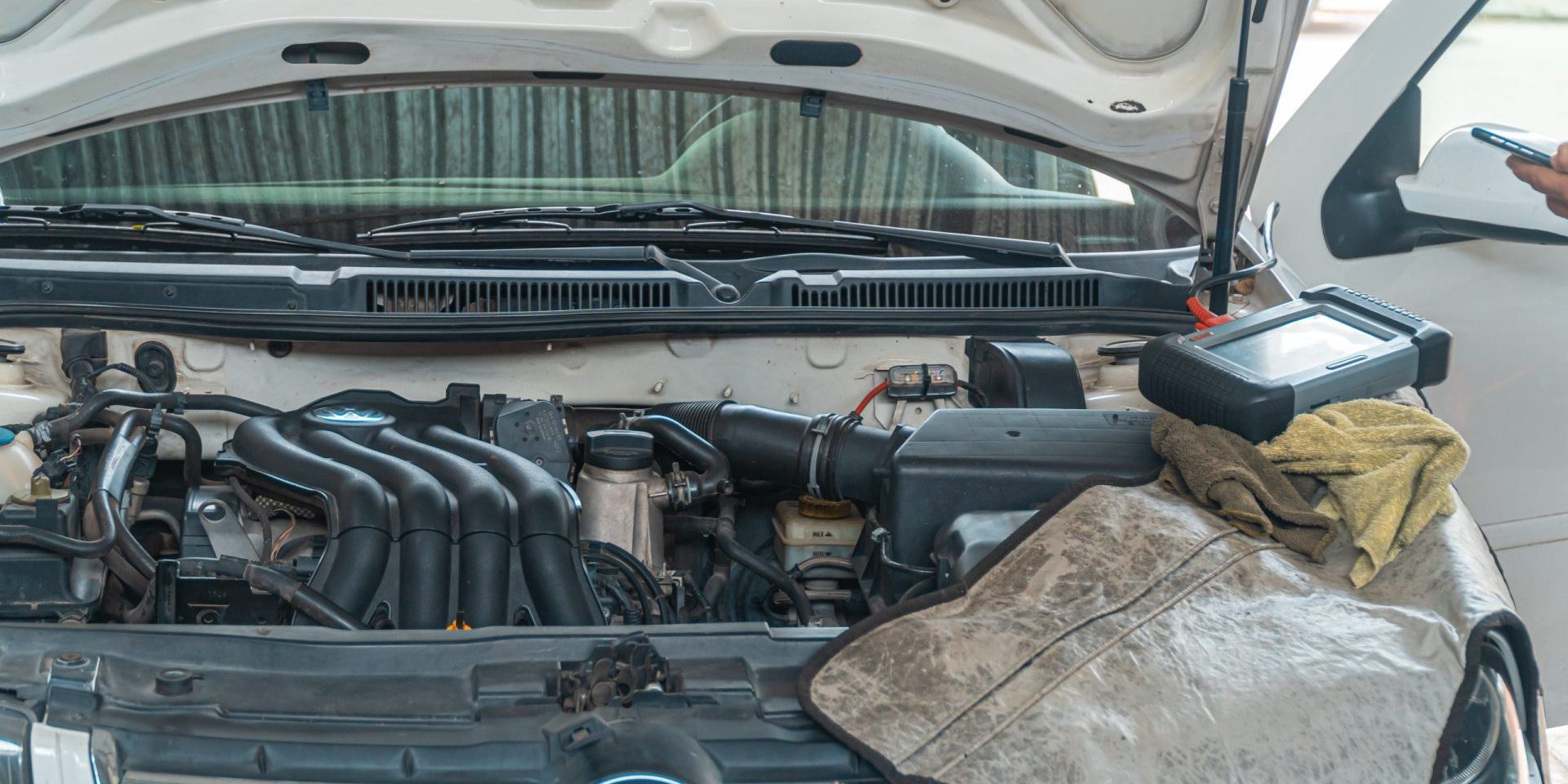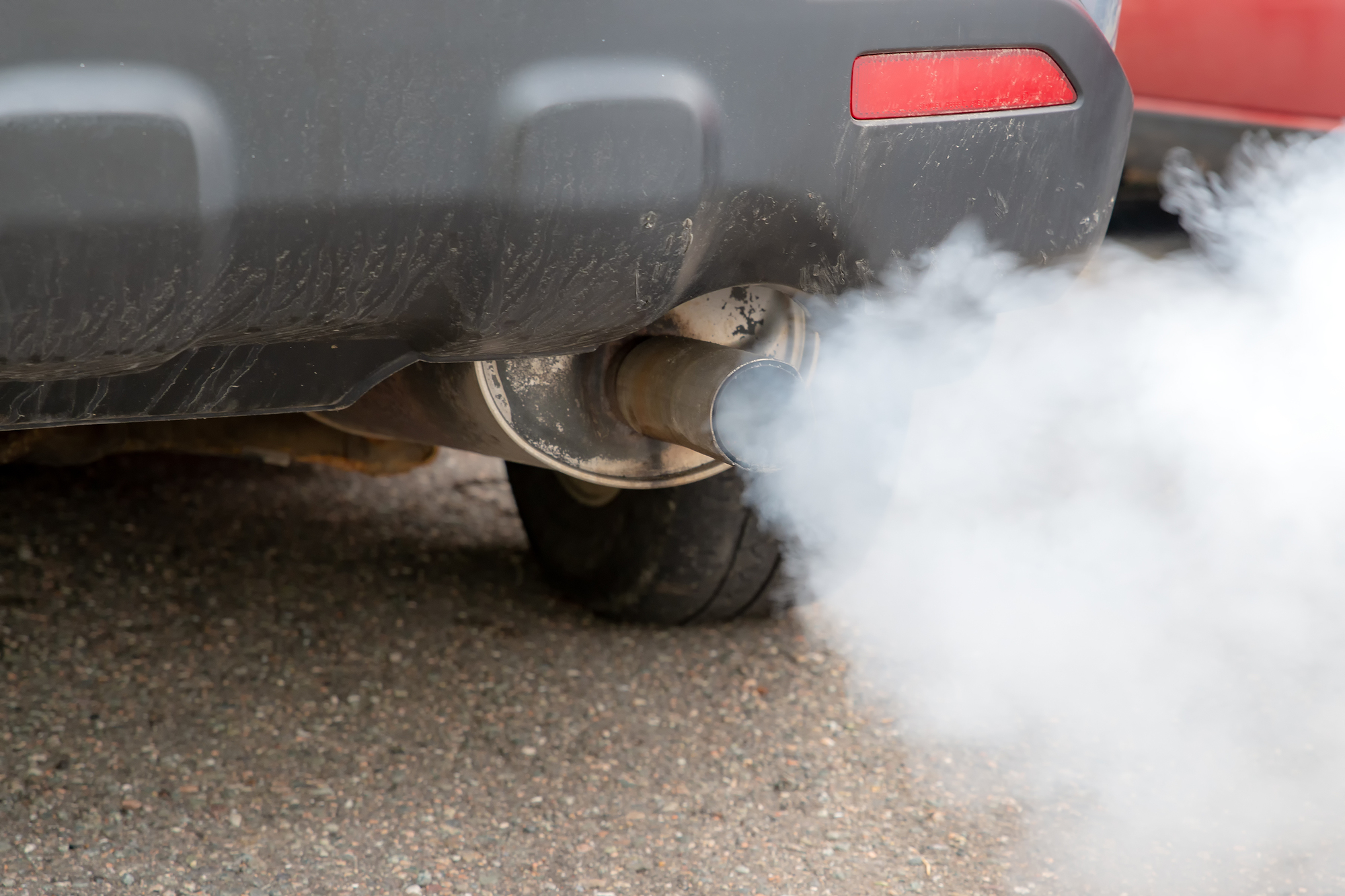How long does it take to change a car battery?


Dead car batteries can be a real headache, but changing one doesn’t have to be. With the right tools and a little know-how, you can swap out your old battery for a new one in no time. But just how long does it take to change a car battery? Let’s find out…
Type and location of the battery
The type and placement of the car battery significantly influences the time it takes to replace it. Different models require different battery types with distinct connection terminals, affecting how easy or difficult it is to change them.
Here is a table depicting the diverse battery types and locations in various car models:
| Model | Battery Type | Location |
|---|---|---|
| Honda Accord | Lead Acid | Engine Bay |
| Tesla Model S | Lithium-Ion | Undertray |
| Ford Mustang | AGM | Trunk |
| BMW X5 | EFB | Rear Footwell |
It’s crucial to understand that certain batteries may be harder to access than others. Batteries under seats or layers of engine components require more time and skill to replace efficiently.
When evaluating batteries for replacing, considering their age may also prove useful. Over time, some batteries corrode and expand, making physical removal challenging without risking damage to other engine parts.
In the past, vehicle batteries had much greater amperage ratings than they commonly have today. As technology advances, technologies like lithium-ion have become both widely available and relatively safe options for electric vehicles.
Who needs a toolbox when you have duct tape and a hammer? Just kidding, you’ll definitely need a few more essentials to change that car battery.
Tools and equipment needed for the job
When replacing a car battery, certain tools and equipment are required to complete the task efficiently. These necessary resources can vary depending on various factors, such as the make and model of the vehicle, the age of the current battery, and the level of expertise a person has in automotive mechanics.
- The first necessary item is a pair of gloves to avoid any injury during installation.
- A wrench or socket set is crucial for loosening and removing bolts that secure the battery bracket in place.
- A wire brush will help clean any corrosion off the terminals before installing the new battery.
It’s worth noting that some vehicles may require additional tools or equipment. For instance, some luxury cars might have specialized connections or brackets. Therefore always cross-check which tools suit your car model before starting.
In addition to these primary requirements, safety measures should also be taken into consideration. Remember to ensure that all accessories are turned off while working near electrical components. Once you’ve replaced the battery, dispose of it properly according to local laws.
Don’t get caught off-guard when your car’s battery dies by not having these essential items on hand! Ensuring you possess all feasible resources required for replacing a car battery equips you with confidence in replacing your vehicle’s dead batteries quickly and efficiently.
Knowledge and experience of the person changing the battery
The skill level and familiarity of the individual replacing a car’s battery can have a significant impact on the time it takes to complete the process. The proficiency of the person in understanding battery installation procedures, as well as knowledge about different brands and model requirements, can directly influence the duration of replacement and ensure safety precautions.
A 4-Step Guide for enhancing one’s Knowledge and experience in changing a car battery:
- Researching manuals or online resources to comprehend safe handling procedures.
- Consulting an expert mechanic for any concerns, queries or even assistance during replacement.
- Practicing on older or used cars before attempting on newer automobiles.
- Taking part in training programs that provide practical knowledge on dealing with different brands, models, and types of batteries.
It is worth mentioning that starting as a novice might take longer than someone with prior experience; therefore, looking up tips from various sources could further improve performance steadily.
One suggestion would be to wear protective gloves while handling batteries. These gloves function as an insulator between the skin and potentially dangerous chemicals present inside them. Another recommendation would be periodically checking cables, terminals or using corrosion inhibitors; if not done correctly, they can cause issues that may prolong battery replacement in future. Through these two suggestions, we understand how they promote safety and contribute towards extending the lifespan of the battery while reducing maintenance costs.
Steps involved in changing a car battery
To effortlessly replace a car battery with the help of ‘Steps involved in changing a car battery’, follow these sub-sections carefully: ‘Safety precautions to be taken before starting the process’, ‘Removing the old battery’, ‘Cleaning the battery tray and terminal connectors’, ‘Installing the new battery’, and ‘Testing the new battery’.
Safety precautions to be taken before starting the process
Before commencing the battery replacement process, it is essential to ensure that safety precautions are taken in order to prevent accidents or injuries. These safeguards are critical in safeguarding both yourself and your vehicle, as well as in ensuring that the replacement goes smoothly.
To help you stay safe while replacing your car’s battery, follow these six steps:
- Turn off the engine and locate the battery.
- Wear protective clothing and gear such as gloves and goggles.
- Remove all metal jewelry and objects.
- Inspect the battery for any signs of damage or leakage.
- Disconnect the negative terminal before disconnecting the positive terminal.
- Use a wrench or pliers to remove the bolts holding the battery in place.
It is crucial to understand these safety measures since a lack of caution when handling batteries can result in explosions, fire breakouts, or severe chemical burns.
Additionally, make sure that you avoid smoking or using electronic gadgets near your car during this process since it can cause sparks capable of igniting leaked gas fumes from your vehicle.
A notorious incident occurred in 2018 when a man accidentally damaged his old car’s battery terminals despite disregarding safety protocols while attempting a DIY battery replacement and suffered third-degree burns following an explosion.
Therefore, taking precautions before handling any component of a car’s electrical system cannot be overemphasized since it could save lives and prevent expensive collateral damage during repairs or maintenance tasks.
Removing the old battery
When you need to replace the existing battery in your car, removing it safely is crucial. You should know the right tools and techniques to perform this task without any physical damage to your vehicle or yourself.
Here is a 4-step comprehensive guide on how to remove an old battery from a car:
- Shut off the engine and let it cool: Before you start removing the existing battery, turn off the engine of your car and give it some time to cool down.
- Detach cables from terminals: Use protective gloves and a wrench to loosen up and remove cables from both battery terminals (negative first, then positive).
- Release locking mechanism: Check if there is a locking system that keeps batteries in place. If yes, release it carefully.
- Lift out the battery: Finally, lift out the battery gently by holding onto its base firmly but carefully.
It’s important to note that environmental factors play an essential role while replacing batteries during extreme temperatures. Ensure caution while handling car batteries.
After successfully learning about ‘Removing the Existing Battery’, one must take utmost care when proceeding towards installing the new one in their cars.
In such cases, where there are many technical nuances involved with such procedures, consulting with professional help would be fruitful.
My friend Kevin once forgot to shut off his car’s engine before replacing his existing cell phone battery. As you would imagine, there was a surge which put his new cell on fire – luckily he had measures into place that prevented more significant issues from happening. It serves as a reminder for us all that safety precautions should always be observed when performing these types of tasks.
Cleaning the battery tray and terminal connectors
Maintaining a clean battery installation area and terminal connectors is crucial. Dirt, grime or any other impurity can cause issues in electrical connections that may render the battery ineffective.
To clean the battery tray and terminal connectors, follow these simple steps:
- Remove the cables from the battery terminals
- Inspect the tray area for any debris or dirt
- Clean the tray with a damp cloth and remove all impurities
- Clean off any corrosion of terminals using baking soda solution; use protective gloves
- Reconnect and secure the cables on their respective terminals cautiously
Cleaning your car’s battery on a regular basis improves electrical performance, increases lifespan of battery, and eliminates corrosion build-up. It is best practice to check your car’s user manual for specific cleaning instructions.
A study conducted by AAA shows that more than one-third of drivers do not get their vehicle batteries inspected regularly, resulting in unexpected breakdowns.
Installing the new battery
To attach the replacement battery, you need to follow some necessary steps. First of all, after detaching the old battery, clean up the battery tray and check if there are any signs of corrosion or rusting. Now, let’s learn how to install the new battery.
- Place The Battery: Place the new battery into the tray and ensure that it’s in the right position.
- Attach The Negative Cable: Attach the negative cable to its terminal and tighten it with a wrench.
- Attach The Positive Cable: Repeat the same process for the positive cable as well – attach it to its terminal and tighten it.
- Coat With Petroleum Jelly: To avoid corrosion and other external damages on terminals, you can coat petroleum jelly over them.
- Test The Battery: Finally, start your car engine and test if you have successfully installed it.
Once you’ve replaced your car’s battery, it’s better if you keep track of its age. Over time, batteries lose their charge-holding capacity. Thus, changing batteries timely can ensure smooth engine performance.
Experts also suggest removing your car keys from ignition when changing batteries to prevent electronic damages in case of accidental mishandling during installation.
Changing a car battery is not only about swapping an old one out and putting in a fresh one – Proper attention must be given throughout each step so that no damage occurs during installation.
Making sure the battery works is crucial, unless you want to be stranded on the highway with a dead car and a live sense of regret.
Testing the new battery
After installing a new battery, it’s advisable to test it to ensure it’s functional. Here is what you should do next:
- Turn off the car and all its accessories.
- Connect a voltmeter to the battery terminals, red positive lead to positive terminal, black negative lead to negative terminal.
- Check the voltage reading on the voltmeter– it should read somewhere between 12.4V to 12.7V for a fully charged battery.
- Start the engine and check the voltage again, which should now read between 13.7V and 14.7V – indicating that your car battery is charging fine.
- Increase the rpm of your engine gradually while checking the voltmeter reading accurately; observe if there is consistent charging between revs for an alternator.
- If everything looks good during testing, then disconnect the voltmeter from terminals.
It’s essential always to conduct this test after replacing your car’s battery since knowing that your battery charges correctly is crucial.
Additionally, performing periodic tests on your new battery will provide you with an insight into any potential issues early enough before they become more severe.
Did you know? Most new batteries come up to approximately 80% charged already when you get them in stores!
Typical time required to change a car battery
To estimate the time to change a car battery, you can either visit a professional mechanic or try the DIY route. In order to know the time required in each scenario, dive into this section on “Typical time required to change a car battery.” This section has the solution with three sub-sections: “Time required for a professional mechanic,” “Time required for a DIY enthusiast with experience,” and “Time required for a first-time DIY’er.”
Time required for a professional mechanic
For an automotive expert, the typical time it takes to replace a car battery is around 30-45 minutes. It depends on factors such as the type of battery, its location, and any other preventative maintenance required. Often, mechanics will also perform a quick diagnostic or inspection of other electrical components like the alternator, starter or fuses to ensure that there aren’t any potential issues that may require further attention in the future.
It’s worth noting that replacing a car battery can be a tricky task for those with limited automotive experience. A poorly installed battery could lead to safety hazards down the road, including electrical shorts or in worst cases thermal runaway. While going to a professional service center may seem more expensive initially, it will save significant time and money over time by preventing costly repairs.
However, skilled DIYers who are adept at vehicle repairs may find it easy and relatively quick to replace old batteries themselves with similar repair times. Still, lack of knowledge about additional precautionary measures and proper installations might force them to reach out for an expert’s help after knowingly or unknowingly damaging electrical systems.
Time required for a DIY enthusiast with experience
For a seasoned DIY enthusiast, changing a car battery can be accomplished in approximately 30 to 45 minutes.
Here is a 4-step guide for expedient battery replacement:
- Gather all necessary tools and equipment such as gloves, pliers, a socket wrench, and the new battery.
- Locate the old battery within the vehicle and loosen and remove its negative terminal followed by its positive one.
- Unfasten any brackets or clamps holing the battery in place and carefully lift it out of the vehicle.
- Place the new battery into position and secure using clamps or brackets before re-attaching both positive and negative cables respectively.
One important aspect is ensuring old batteries are properly disposed of via authorized disposal facilities.
To prevent corrosion build-up on terminals, utilize petroleum jelly or a water-based solution of baking soda, as these materials act as effective antiseptic agents.
Following these suggestions will result in time-efficient maintenance and replacement of your vehicle’s battery.
Time required for a first-time DIY’er
For someone attempting to replace a car battery for the first time, the process can seem daunting. However, with the right tools and steps, it is a reasonably straightforward task that can be accomplished in under an hour.
Here is a simple 6-step guide to help first-time DIYers replace their car batteries:
- First, gather all materials needed using a checklist provided by the manufacturer or an auto parts store.
- Turn off the engine and remove the keys before opening the hood of your vehicle.
- Lift and secure the battery cover.
- Dismantle and unfasten any locking systems on the battery terminals carefully.
- Clean all surfaces of old connections before installing new ones by following manufacturer guidelines carefully.
- Meticulously replace parts removed during earlier steps and turn on ignition to test whether or not the car is functioning correctly.
It’s important to note that each vehicle make and model will have different specifications for battery replacements. Still, as long as guidance is followed step-by-step, there aren’t likely to be significant difficulties encountered along the way.
One pro tip worth applying during this process involves disconnecting your car’s negative terminal first when dismantling an existing connection step. Doing so will help prevent exposed positive wires from short-circuiting on metal body parts.
Tips for quick and efficient battery replacement
To make battery replacement quick and efficient with the use of the right tools and equipment, following a step-by-step guide, enlisting the help of a friend or family member, and practicing safety measures to avoid accidents. Find out the benefits of each solution and changing your car battery in no time.
Using the right tools and equipment
When it comes to efficiently replacing a battery, selecting the appropriate tools and equipment is of utmost importance. Here are some key points to keep in mind:
- Choose a battery with the same voltage as your previous battery.
- Invest in a quality battery terminal cleaner.
- Purchase a socket wrench with an extension for better reachability of hard-to-reach areas.
- Consider using gloves to protect yourself from harmful chemicals or spilled fluids.
- Use a battery carrier to safely remove and install the new battery.
In addition to these tips, ensuring that all electrical components are turned off before removing and installing a new battery can prevent unwanted damage.
Pro Tip: Always reference your vehicle’s manual when performing any type of maintenance on your vehicle’s electrical components. It will provide you with specific instructions tailored to your vehicle’s make and model.
How long does it take to change a car battery? – Key Takeaways
To conclude, if you’re planning on changing your car battery, keep in mind the factors that affect how long it takes. Regular battery maintenance and replacement are crucial in avoiding unexpected battery failures and damage to your vehicle. However, if you’re unsure about replacing the battery yourself, seek professional help. This final section will recap the important factors that impact the time it takes to change a car battery and emphasize the importance of proper battery care. Additionally, we’ll encourage you to seek professional assistance if you’re unsure about the process.
Recap of the factors that affect how long it takes to change a car battery
Factors affecting the duration of car battery replacement vary between vehicle models, battery types, and technician experience. These include:
- Model and Year of Car.
- Type of Battery.
- The Skill Level of Technician.
- Difficulty Level of Accessing the Old Battery in the Engine Compartment.
It can be a tricky job to detach corroded connectors or bolts which may add time to the process. Replacing a car battery should not be attempted if you lack knowledge or experience. Seek professional help for safety reasons.
According to AAA, approximately 32 million drivers have experienced dead batteries in their vehicles that require emergency services. Skipping battery maintenance is like playing Russian roulette with your car’s starting power – don’t risk getting stranded!
Emphasizing the importance of regular battery maintenance and replacement
Regular maintenance and replacement of car batteries is crucial for optimal vehicle function. Neglecting battery care can lead to a host of issues, including reduced power output, shortened lifespan, and frequent breakdowns. Additionally, poor maintenance can even cause permanent damage to the vehicle’s electrical system.
To ensure that your car battery performs as expected, it is recommended to check its condition periodically, especially before long trips or extreme weather events. Keep in mind that high temperatures can accelerate battery drainage while colder temperatures decrease the battery output. Therefore, taking measures to protect the battery from extreme circumstances such as parking in shaded areas or garages during hot periods is essential.
Moreover, it’s always recommended to have an expert technician examine your car battery at regular intervals for potential issues and replace it when necessary. Most batteries have their lifespans marked on them; however, it’s best not to wait until they fail but rather take proactive steps.
Lastly, besides replacing old batteries with new ones (when needed), there are other ways of maximizing your car’s battery life. Disconnecting any electronics (such as charging cables) and turning off headlights and accessories when the engine is off will avoid unnecessary drain on the battery.
Overall, proper maintenance of a car battery is incredibly important because the safety and efficiency of a vehicle depend on its ability to start up correctly every time. By following these tips and having a professional assessment done regularly, you’ll be able to keep your car in top shape for years to come.
Leave the car battery swapping to the pros unless you want to end up sparking a new hobby of car repair.
Encouragement to seek professional help if unsure about changing a car battery.
If you are uncertain about replacing a car battery, it is strongly advised to get professional assistance. Seek expert help if you lack experience in automobile maintenance or do not have the right tools. Accidentally causing damage to the vehicle or injuring oneself can be costly in such instances.
A professional mechanic can assist with not just replacing the battery, but also inspecting other components under the hood and ensuring that they are working correctly. Since an automobile consists of numerous elements that function together, it’s essential to be certain that everything is running well before moving on. Therefore, approach a specialist if unsure.
Additionally, even if you’re confident in your battery-changing abilities but need assistance with disposal or recycling, experts may aid in safely disposing of old batteries while adhering to environmental laws.
How long does it take to change a car battery? – Frequently Asked Questions
1. How long does it take to change a car battery?
Typically, changing a car battery can be done in about 20-30 minutes.
2. Can I change my car battery on my own?
It is possible to change a car battery on your own, however proper precautions and safety measures should be taken. If you are not comfortable or familiar with car maintenance, it is recommended to seek professional help.
3. How often should I change my car battery?
It is recommended to change your car battery every 3-5 years, depending on the make and model of your car and your driving habits.
4. Can I drive with a dead battery?
No, it is not safe to drive with a dead battery as your car’s electrical system will not be able to function properly.
5. How do I know if my car battery needs to be changed?
Signs that your car battery needs to be changed include slow engine crank, dimming headlights, and a bloated or swollen battery case.
6. What is the cost to replace a car battery?
The cost to replace a car battery varies depending on the make and model of your car and the type of battery needed. On average, the cost can range from $100-$300 for parts and labor.











[…] Q: How long do I need to leave my car running to charge the battery? […]
[…] the car with a dead battery can be challenging. However, you can follow these simple steps to jump-start your vehicle using […]